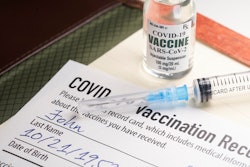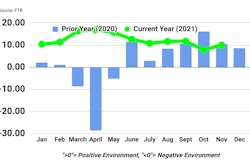Trucking news and briefs for Monday, Jan. 31, 2022:
Legal challenging 2020 HOS changes resumes
A legal challenge to the Federal Motor Carrier Safety Administration’s 2020 hours of service changes was reignited recently, as the U.S. Court of Appeals for the District of Columbia began accepting petitions more than a year after the lawsuit was initially filed. The case was placed in abeyance in early 2021 to allow the new administration to become familiar with the updated regulations, and it was resumed in October.
The International Brotherhood of Teamsters, Advocates for Highway and Auto Safety, Citizens for Reliable and Safe Highways and Parents Against Tired Truckers sued FMCSA over the changes to the regulations, claiming the updates HOS rules are not as safe as the rules before the changes took effect.
Specifically, the groups say that, in changing the 30-minute break rules to where the break can be taken on-duty rather than requiring it to be taken off-duty, FMCSA did “not account for fatigue from non-driving work or consider the effect of the changes to the 30-minute break requirement on the benefits that FMCSA attributed to that requirement when it adopted the requirement in 2011.”
The petition also calls changes to the short-haul exemption into question. The revised HOS regulations extended the allowable operating radius and daily on-duty hours for drivers to be able to operate under a waiver in which they aren’t required to keep logs. The old rules exempted drivers operating within a 100 air-mile radius of their base and gave them a 12-hour on-duty limit. The HOS changes extended the radius to 150 air miles and allowed drivers to work 14 hours a day to still receive the exemption.
“The final rule does not contain a rational explanation why increasing the number of drivers who are exempt from documenting their driving hours – and providing those drivers with a longer workday and larger driving radius – will not affect compliance with hours-of-service rules,” the groups said.
FMCSA responded to the groups’ concerns, saying they “failed to provide the court with sufficient evidence” to support their claims.
The Owner-Operator Independent Drivers Association, filing comments on FMCSA’s behalf, said the changes to the 30-minute break and short-haul exemption rules “represent common sense updates to the hours-of-service rules that significantly increase flexibility for commercial truck drivers while maintaining safety at least equivalent to previous versions of these rules. In adopting the final rule, the agency relied on ample evidence from the administrative record demonstrating that more hours-of-service flexibility means more efficient trips and less stress for drivers, improving safety on the road.”
The next step in the rule is for the Teamsters and safety groups to file a response to FMCSA and OOIDA. Final briefs for the case are due March 8.
Werner to test Cummins nat-gas, hydrogen engines
Werner Enterprises (CCJ Top 250, No. 13) will begin validation and integration of Cummins’ recently announced 15-liter natural gas and 15-liter hydrogen internal combustion engines in its vehicles.
Cummins will begin integrating these new powertrains in Werner trucks in the second half of this year, starting with the 15-liter natural gas product.
The collaboration between Werner and Cummins is expected to provide Cummins with operational and performance data to empower the company to optimize its product offerings, said Amy Boerger, vice president and general manager, North America at Cummins. "These collaborations allow us to refine and optimize our technologies to make the shift to zero-emissions commercial transportation solutions across diverse markets much more quickly."
The 15-liter natural gas engine announced in October can be paired with a Cummins Eaton Automated Transmission Technologies Endurant HD Transmission and Cummins Fuel Delivery System. Other transmission pairings will be available at launch for specialized applications.
The 15-liter engine will offer ratings up to 500 horsepower and 1,850 ft-lbs of torque, while not requiring selective catalytic reduction (SCR) to meet 2024 California or Environmental Protection Agency emission standards, providing a potentially carbon-negative solution when powered with renewable natural gas (RNG).












